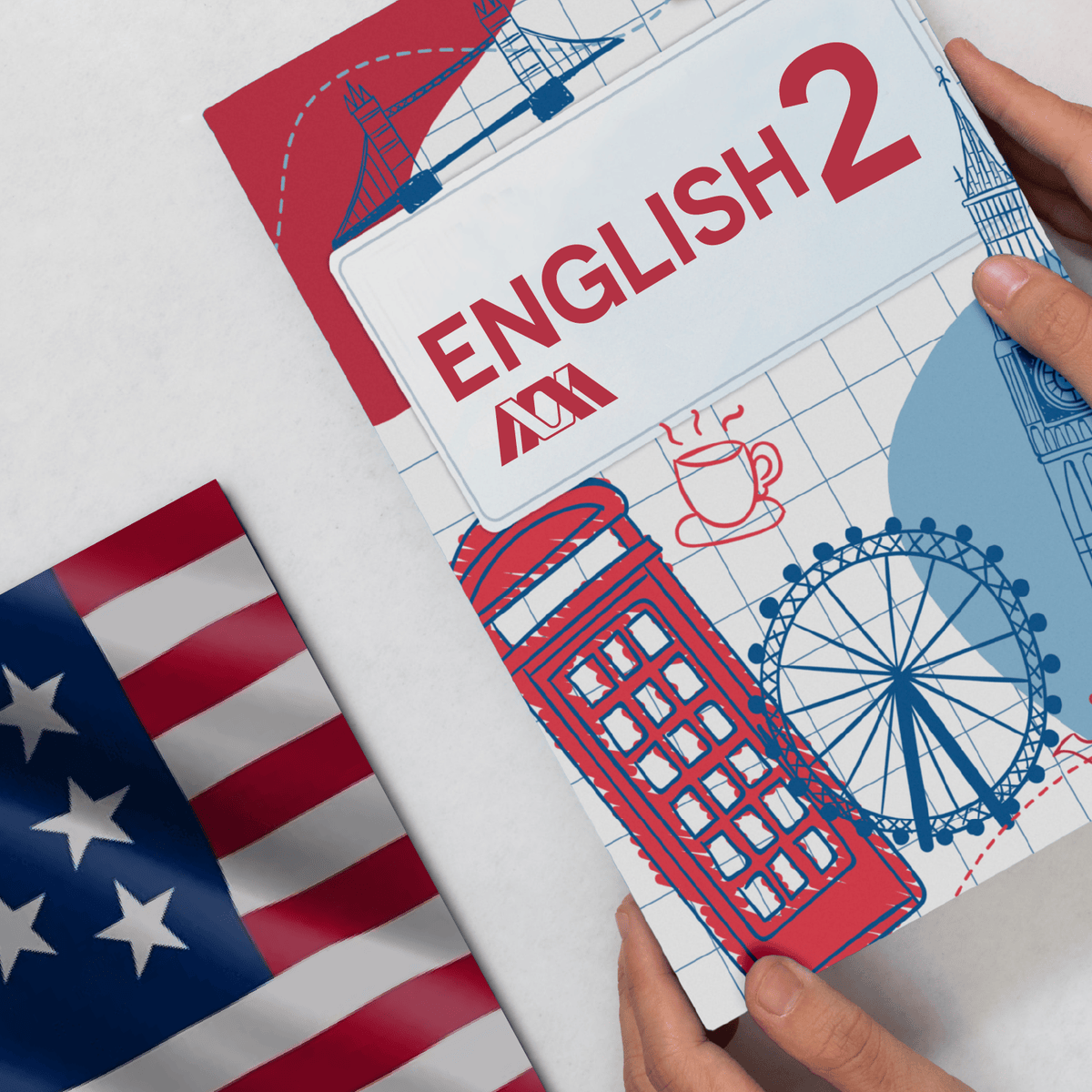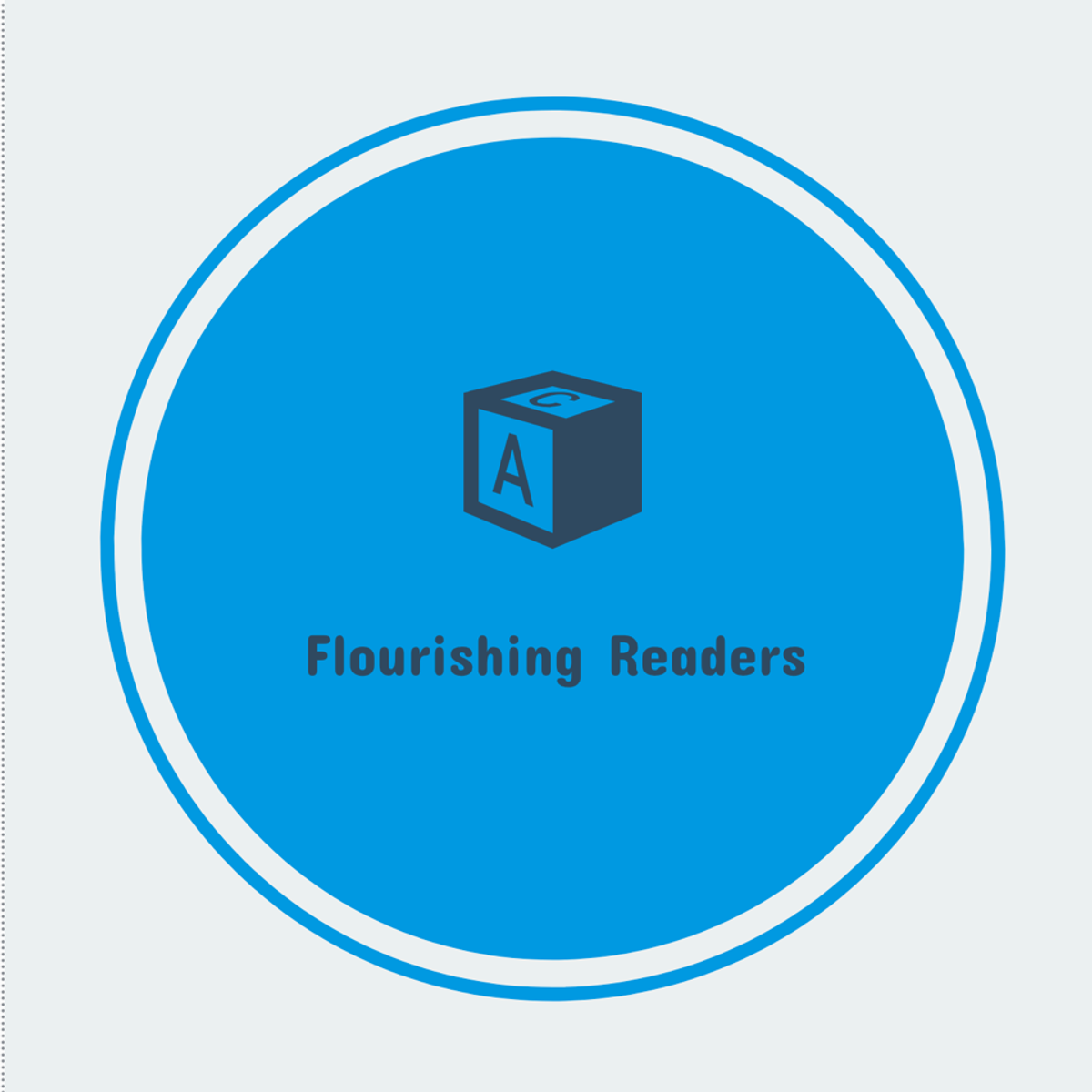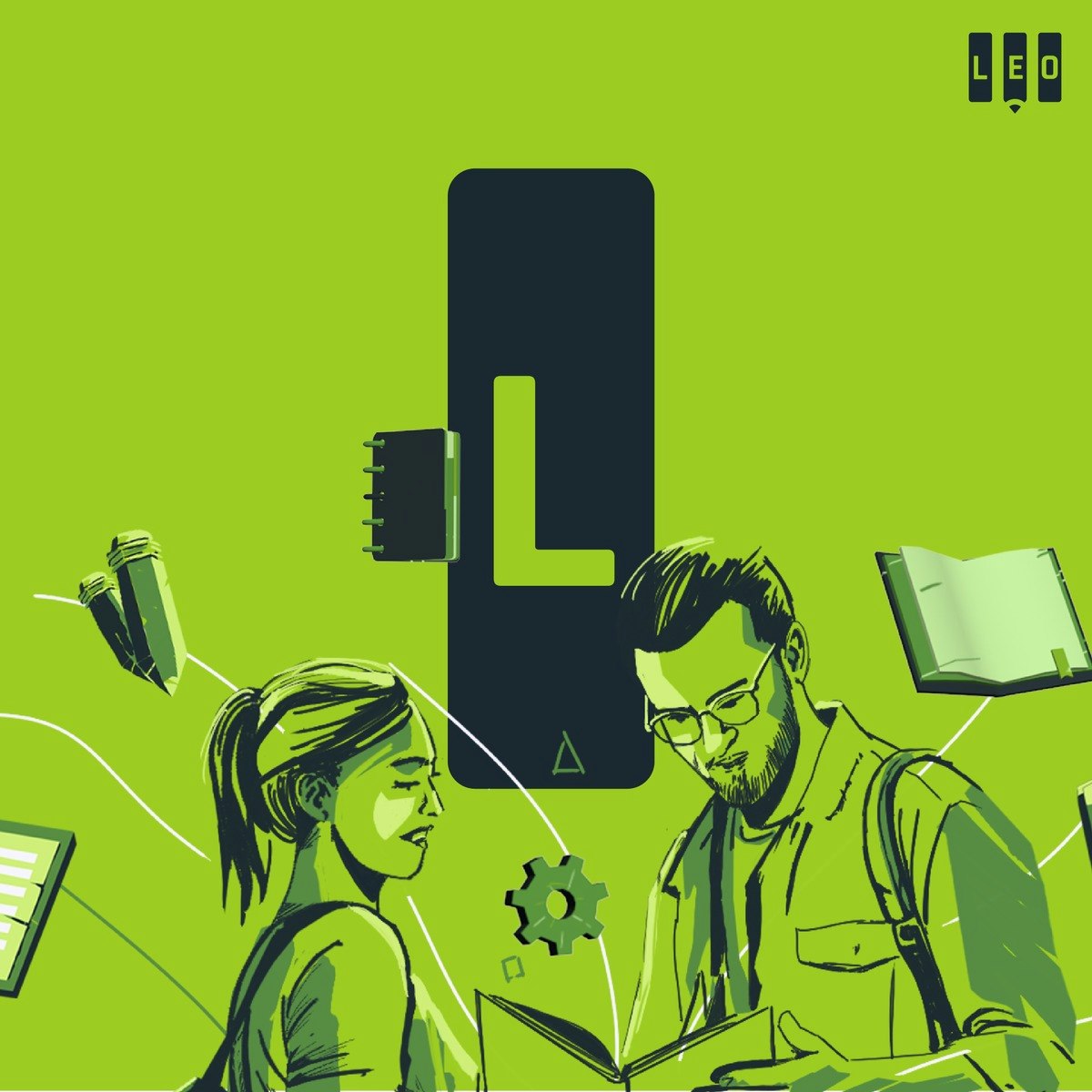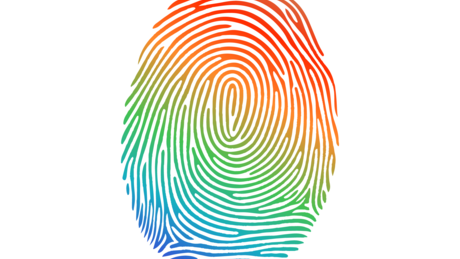Reading Comprehension
locking Meaning: A Comprehensive Guide to Reading Comprehension
Reading comprehension is the intricate process of understanding written text. It involves not only decoding words and sentences but also grasping the underlying meaning, making connections to prior knowledge, and drawing inferences. This skill forms the bedrock of learning, communication, and critical thinking, enabling individuals to navigate an increasingly complex world of information. Whether for academic pursuits, professional advancement, or personal enrichment, strong reading comprehension opens doors to a universe of knowledge and perspectives.
The journey to mastering reading comprehension can be profoundly rewarding. Imagine the thrill of effortlessly absorbing complex information, the satisfaction of dissecting an author's argument with precision, or the joy of losing yourself in a narrative, fully understanding its nuances. Developing this skill enhances not just how you read, but how you learn, think, and engage with the world around you. It is a foundational element for lifelong learning and intellectual growth.
What is Reading Comprehension?
At its core, reading comprehension is the ability to process text, understand its meaning, and integrate it with what the reader already knows. It's an active and complex process that involves several cognitive skills working in concert. Without comprehension, reading is merely word recognition without purpose or understanding. This skill is essential for academic success, professional competence, and informed citizenship.
Defining the Scope of Reading Comprehension
Reading comprehension extends beyond simply understanding the literal meaning of words on a page. It encompasses a spectrum of abilities, from identifying the main idea and supporting details to making inferences, understanding an author's purpose and tone, and evaluating the credibility of information. It involves interacting with the text, questioning it, and connecting it to broader contexts.
The scope also includes understanding different types of texts, such as narrative, expository, persuasive, and technical writing, each requiring slightly different approaches to comprehension. Furthermore, the context in which reading occurs—whether for academic study, professional tasks, or leisure—can influence the depth and focus of comprehension needed. Effective readers adapt their strategies based on the text and their reading goals.
Ultimately, strong reading comprehension empowers individuals to learn independently, think critically, and communicate effectively. It is a skill that underpins success in virtually every aspect of life, from navigating daily information to making complex decisions.
Key Components: Decoding, Vocabulary, Fluency, and Reasoning
Several key components work together to enable reading comprehension. The first is decoding, which is the ability to apply knowledge of letter-sound relationships to correctly pronounce written words. Without accurate and efficient decoding, readers will struggle to identify words, hindering their ability to understand the text's meaning.
Vocabulary knowledge is another critical pillar. Understanding the meaning of words within a text is essential for comprehending sentences, paragraphs, and overall messages. A broader vocabulary allows readers to grasp more nuanced meanings and access a wider range of texts. Readers can build their vocabulary through direct instruction, wide reading, and context clue strategies.
Fluency refers to the ability to read text accurately, quickly, and with appropriate expression. Fluent readers do not have to concentrate on decoding each word, freeing up cognitive resources to focus on understanding the meaning of the text. Fluency acts as a bridge between word recognition and comprehension. Finally, reasoning skills, including making inferences, understanding cause and effect, and drawing conclusions, are vital for constructing meaning beyond the literal words on the page. These higher-order thinking skills allow readers to fully engage with and interpret the text.
These courses can help build a foundation in understanding the components of reading, especially for those looking to improve their English language skills or prepare for specific assessments.
The Indispensable Role of Reading Comprehension in Academic and Professional Success
In academic settings, reading comprehension is paramount. Students at all levels, from elementary school through higher education, rely on this skill to understand textbooks, research articles, and complex instructions. Success in subjects ranging from literature and history to science and mathematics heavily depends on the ability to comprehend and analyze written materials. Strong readers can synthesize information from multiple sources, identify key arguments, and critically evaluate evidence, all of which are crucial for academic achievement.
Professionally, reading comprehension is equally vital. Many careers require individuals to read and interpret reports, technical manuals, legal documents, emails, and industry publications. The ability to quickly and accurately understand written information can impact decision-making, problem-solving, and overall job performance. Fields such as law, medicine, engineering, research, and management demand high levels of reading comprehension. Even in roles not traditionally seen as reading-intensive, the capacity to understand policies, training materials, and communications is essential.
Beyond specific tasks, effective reading comprehension contributes to broader professional competencies like critical thinking, communication, and continuous learning. In a rapidly changing job market, the ability to acquire new knowledge and skills through reading is a significant asset. Therefore, investing in the development of reading comprehension is an investment in one's academic and professional future.
For those preparing for standardized tests that are often gateways to academic or professional opportunities, focused reading comprehension practice is key. These courses offer strategies and practice for tests like the TOEFL and GMAT.
The following books offer insights into literacy development and instruction, which are fundamental to understanding how reading comprehension is built.
Cognitive Processes in Reading Comprehension
Understanding what happens in the brain during reading can help educators and learners alike. Reading comprehension is not a passive activity; it is an active mental process that engages various cognitive functions. These processes work together to transform symbols on a page into meaningful understanding.
The Interplay of Memory and Attention Mechanisms
Memory and attention are fundamental to reading comprehension. Attention allows a reader to focus on the text, filtering out distractions and concentrating on the words and their meanings. Sustained attention is necessary to follow the thread of a narrative or the development of an argument over longer passages. Selective attention helps readers identify important information while disregarding less relevant details.
Working memory plays a crucial role by holding information temporarily as it is being processed. When reading a sentence, working memory holds the initial words while subsequent words are decoded, allowing the reader to construct the meaning of the entire sentence. It also enables readers to connect current information with what was read previously in the text. Limitations in working memory capacity can significantly impact comprehension, especially with complex sentences or dense material.
Long-term memory is where prior knowledge, vocabulary, and learned reading strategies are stored. Effective comprehension involves retrieving relevant information from long-term memory and integrating it with the new information presented in the text. The richer the network of knowledge in long-term memory, the more connections a reader can make, leading to deeper understanding.
These courses can help learners improve focus and understanding, which are key cognitive aspects of reading.
Schema Theory and the Integration of Prior Knowledge
Schema theory explains how our existing knowledge, organized into mental frameworks or "schemas," influences comprehension. Think of schemas as mental filing cabinets; when you encounter a familiar topic, you access the relevant schema, which provides a context for understanding new information. For example, if you have a well-developed schema about "dogs," reading a text about a specific breed will be easier because you can integrate new details into your existing knowledge structure.
Prior knowledge significantly impacts how readers interpret text. When readers can connect what they are reading to what they already know, comprehension deepens. They can make predictions, fill in gaps, and understand unstated assumptions. Conversely, a lack of relevant prior knowledge can be a major barrier to comprehension, as the reader has no framework to which new information can be attached.
Effective reading instruction often involves activating students' prior knowledge before they read a text. This can be done through discussions, brainstorming, or previewing activities. By bringing relevant schemas to the forefront of their minds, learners are better prepared to make sense of the new material and integrate it meaningfully.
Understanding how the brain processes reading can be fascinating. These books delve into the science behind reading and literacy.
Metacognitive Strategies: Thinking About Thinking
Metacognition, often described as "thinking about thinking," refers to a reader's awareness and control of their own comprehension processes. Good readers are metacognitively active; they monitor their understanding as they read, identify when comprehension breaks down, and employ strategies to repair it. This is a hallmark of skilled reading.
Key metacognitive strategies include:
- Setting a purpose for reading: Knowing why one is reading helps focus attention and determine the level of detail required.
- Previewing the text: Skimming headings, subheadings, and summaries can provide an overview and activate prior knowledge.
- Self-monitoring: Regularly pausing to check if the text makes sense and if one is meeting the reading goal. This might involve asking questions like, "Do I understand this?" or "What is the main idea here?"
- Making predictions: Anticipating what might come next based on what has already been read.
- Visualizing: Creating mental images of the content being described.
- Summarizing and paraphrasing: Restating the information in one's own words to check understanding.
- Using fix-up strategies: When comprehension falters, skilled readers might reread, look up unfamiliar words, or adjust their reading pace.
Developing metacognitive skills is crucial for becoming an independent and effective learner. Explicit instruction in these strategies can significantly improve reading comprehension, particularly for struggling readers. By becoming more aware of their own thought processes while reading, individuals can take active control of their learning.
Courses that focus on test preparation often implicitly or explicitly teach metacognitive strategies, as success in these exams requires careful monitoring of understanding and strategic approaches to different question types.
Educational Pathways in Reading Comprehension
Developing strong reading comprehension skills is a journey that often begins in early childhood and continues throughout one's educational and professional life. Formal education plays a critical role in laying the foundation and refining these abilities. For those looking to deepen their understanding or specialize in this area, various pathways exist.
Integration within K-12 Curriculum
Reading comprehension is a central focus of the K-12 curriculum. In the early grades, instruction typically emphasizes foundational skills such as phonics, phonemic awareness, vocabulary development, and fluency. As students progress, the focus shifts towards more complex comprehension strategies, including identifying main ideas, making inferences, analyzing text structure, and understanding different genres.
Teachers across all subject areas, not just language arts, share the responsibility of teaching reading comprehension relevant to their disciplines. For example, a science teacher might instruct students on how to read and interpret scientific reports, while a history teacher might focus on analyzing primary source documents. This cross-curricular approach helps students understand that reading comprehension is a versatile skill applicable in many contexts.
Online resources and courses can supplement classroom instruction, providing targeted practice and support for K-12 students. OpenCourser offers a way to explore K-12 subjects and find materials that can help build foundational literacy skills from an early age.
These courses are designed to support young learners and those guiding them in developing early literacy skills.
For educators and parents, these books offer practical guidance on fostering literacy in young children.
Undergraduate and Graduate Program Focus
At the undergraduate level, students typically encounter advanced reading comprehension demands across all disciplines. While dedicated "reading comprehension" courses are less common, the skills are implicitly taught and honed through coursework in literature, critical thinking, research methods, and specialized subjects. Students are expected to read complex academic texts, synthesize information, and engage in critical analysis.
For those wishing to specialize in reading comprehension, relevant undergraduate majors include Education, English, Linguistics, Psychology, and Cognitive Science. These programs often explore the theoretical underpinnings of reading, language acquisition, and literacy development. Some programs may offer concentrations or specific coursework in literacy instruction or reading research.
Graduate programs offer more specialized pathways. Master's and doctoral degrees in Reading Education, Literacy Studies, Special Education (with a focus on reading disabilities), or Applied Linguistics can prepare individuals for roles as literacy specialists, reading coaches, curriculum developers, researchers, or university faculty. These advanced programs delve deeply into research methodologies, assessment techniques, and instructional strategies for diverse learners.
Online courses can serve as excellent preparatory tools or supplements for undergraduate and graduate studies, allowing students to explore specific areas of interest or strengthen foundational knowledge before embarking on a degree program. For instance, courses on academic writing or critical analysis can be highly beneficial. You can explore a wide variety of academic disciplines on OpenCourser by visiting the browse page.
Research Opportunities in Cognitive Science and Linguistics
The fields of cognitive science and linguistics offer rich opportunities for research into reading comprehension. Cognitive scientists investigate the mental processes involved in reading, such as attention, memory, and language processing, often using experimental methods and neuroimaging techniques like fMRI to study brain activity during reading.
Linguists contribute by analyzing the structure of language, how meaning is constructed in texts (semantics and pragmatics), and how language acquisition impacts reading development. Research in these areas can lead to a better understanding of why some individuals struggle with reading comprehension and how to develop more effective interventions and instructional approaches.
Students interested in pursuing research in these fields typically need a strong foundation in research methods, statistics, and their chosen discipline (cognitive psychology or linguistics). Opportunities often exist at universities with active research labs in these areas. Participating in research projects as an undergraduate or pursuing graduate studies are common pathways to becoming a researcher in reading comprehension.
For individuals interested in the formal study of language and texts, these courses offer a starting point, particularly for those needing to read academic papers or texts in different languages.
The Influence of Technology on Reading Comprehension
Technology has profoundly reshaped how we access, interact with, and comprehend written information. From digital texts and e-readers to sophisticated AI-powered learning tools, technological advancements offer both new opportunities and unique challenges for reading comprehension. Understanding this evolving landscape is crucial for educators, learners, and EdTech professionals.
AI-Driven Tools and Adaptive Learning Platforms
Artificial Intelligence (AI) is increasingly being integrated into educational tools designed to enhance reading comprehension. AI-driven platforms can offer personalized learning experiences by adapting to individual student needs and progress. For example, some systems can analyze a student's reading patterns, identify areas of difficulty, and then provide targeted exercises, vocabulary support, or modified texts to aid understanding.
Adaptive learning platforms may use AI to recommend texts at an appropriate reading level, provide instant feedback on comprehension questions, or even simulate interactive dialogues about a text to deepen engagement. Tools that leverage Natural Language Processing (NLP) can help students with writing by analyzing their text for clarity and coherence, indirectly supporting reading skills by fostering a better understanding of text structure.
While the potential of AI in this domain is vast, it's important to critically evaluate these tools. Considerations include the pedagogical soundness of the AI's approach, data privacy, and ensuring that technology complements rather than replaces the crucial role of human educators. OpenCourser's Learner's Guide offers insights into making the most of online learning tools and platforms.
This course explores using a specific platform to enhance reading comprehension through active engagement with texts.
This course explores how AI tools like ChatGPT can be used in language learning, which has direct implications for reading comprehension.
Navigating Comprehension: Digital vs. Print Text
The shift from print to digital reading materials has sparked considerable discussion about its impact on comprehension. Research in this area has yielded mixed results, but some patterns are emerging. Some studies suggest that for deep comprehension, particularly of longer and more complex texts, reading in print may have advantages over reading on screens.
Factors contributing to potential differences include the physical nature of print, which may aid in spatial memory of text layout, and the reduced distractions often associated with print compared to digital devices with notifications and a multitude of other functions. Additionally, the scrolling and hyperlinking common in digital environments can sometimes fragment attention and encourage a more superficial "skimming" style of reading rather than deep engagement.
However, digital texts offer unique benefits, such as built-in dictionaries, text-to-speech features, adjustable font sizes, and the ability to easily search and annotate. The key may lie not in whether digital or print is inherently superior, but in how readers interact with each medium and the strategies they employ. Developing digital literacy skills, including how to read critically and deeply on screens, is becoming increasingly important.
Accessibility Technologies for Diverse Learners
Technology has been a game-changer for improving access to written information for diverse learners, including those with disabilities. Text-to-speech (TTS) software, for example, can read digital text aloud, benefiting individuals with dyslexia, visual impairments, or other reading difficulties. Screen readers provide auditory access to digital content for blind or visually impaired users.
Adjustable font sizes and styles, customizable color contrasts, and screen magnification tools can make digital texts more readable for individuals with low vision. For students with learning disabilities that affect comprehension, some software offers features like text simplification, integrated dictionaries and thesauruses, and graphic organizers to help structure information.
Furthermore, assistive technologies can help with the physical act of reading, such as page-turners or alternative input devices for individuals with motor impairments. The ongoing development of accessibility technologies aims to create a more inclusive learning environment where all individuals have the opportunity to develop strong reading comprehension skills. The Web Content Accessibility Guidelines (WCAG) provide a framework for making web content more accessible to people with disabilities.
Career Pathways Benefiting from Strong Reading Comprehension
Advanced reading comprehension is not just an academic asset; it is a highly transferable skill valued across a multitude of professions. The ability to quickly and accurately understand complex written information, analyze arguments, and synthesize knowledge is crucial in today's information-driven economy. While not always a job title itself, strong reading comprehension underpins success in many roles.
Key Roles in Education, Publishing, and Corporate Training
In the field of education, strong reading comprehension is fundamental for teachers at all levels. They must understand curriculum materials, academic research, and student needs to design effective instruction. Literacy specialists and reading coaches work directly with students and teachers to improve reading skills. Roles in curriculum development also require a deep understanding of how to structure information for optimal comprehension. You might explore careers such as Literacy Specialist or Instructional Designer.
The publishing industry relies heavily on individuals with excellent reading comprehension. Editors, copyeditors, and proofreaders must meticulously analyze manuscripts for clarity, coherence, accuracy, and style. Literary agents and acquisition editors need to evaluate submissions and understand market trends, all of which involve extensive reading and critical assessment. A career as an Editor could be a path to consider.
In corporate training and development, professionals design and deliver learning programs for employees. This requires comprehending complex business needs, industry regulations, and technical information to create effective training materials and documentation. They must ensure that information is presented in a way that is easily understood by diverse audiences within the organization.
These courses cater to individuals looking to teach or improve writing and text comprehension, skills vital in education and publishing.
Impact on Data Analysis and Technical Writing
While seemingly different, both data analysis and technical writing demand superior reading comprehension. Data analysts must often read and understand project requirements, existing research, and reports from various stakeholders to inform their analyses. They need to comprehend the context of the data they are working with to draw meaningful insights and avoid misinterpretations. The ability to read and understand technical documentation related to software and methodologies is also critical.
Technical writers specialize in making complex information accessible and understandable. They create user manuals, software documentation, scientific papers, and other technical communications. This requires them to first thoroughly comprehend the technical subject matter, often through reading dense specifications, interviewing subject matter experts, and studying product designs. Their primary role is to translate this complex understanding into clear, concise, and accurate written material for a target audience. This field often involves working with specialized tools and understanding principles of information architecture.
In both fields, the clarity of output is directly proportional to the depth of comprehension of the input. Misunderstanding source material can lead to flawed analysis or inaccurate documentation, with potentially significant consequences.
For those involved in academic or technical fields, understanding how to effectively read and synthesize specialized texts is crucial.
The following book provides guidance on understanding text complexity, a key aspect of technical reading and analysis.
Cross-Industry Demand for Critical Reading Skills
Beyond specific roles, critical reading skills—an advanced form of reading comprehension involving analysis, interpretation, and evaluation—are in high demand across nearly all industries. Professionals who can critically read and understand industry reports, market analyses, competitor strategies, legal contracts, and policy documents provide immense value to their organizations.
In fields like finance, law, healthcare, and technology, the ability to sift through large volumes of text, identify key information, discern biases, and make informed decisions based on written material is indispensable. For example, a Financial Analyst must comprehend financial statements and market news, a lawyer must interpret statutes and case law, and a healthcare professional must stay abreast of medical research. Even in creative industries, understanding briefs, proposals, and feedback requires strong reading comprehension.
As automation handles more routine tasks, the uniquely human skills of critical thinking and deep comprehension become even more valuable. Cultivating these abilities can therefore open doors to a wider range of career opportunities and support long-term career growth in an evolving job market. Many employers recognize these skills as indicators of a candidate's ability to learn, adapt, and solve complex problems.
Developing critical reading is a skill that transcends specific job roles and is valuable in any professional setting. These courses focus on advanced reading and critical thinking applicable across industries.
This book can assist educators in developing robust comprehension instruction.
Navigating Challenges in Reading Comprehension
While reading comprehension is a fundamental skill, many individuals face challenges in developing proficiency. These difficulties can stem from a variety of factors, including linguistic differences, learning disabilities, cognitive demands, and cultural gaps. Recognizing these challenges is the first step toward implementing effective strategies and support systems.
Language Barriers and Learning Disabilities
For individuals learning a new language, reading comprehension can be particularly challenging. They may struggle with unfamiliar vocabulary, complex grammatical structures, and idiomatic expressions. Even if they can decode words, constructing meaning can be difficult if their foundational language skills are still developing. Patience, targeted vocabulary instruction, and exposure to a wide range of texts in the new language are crucial.
Learning disabilities, such as dyslexia, can also significantly impact reading comprehension. Dyslexia primarily affects word recognition and decoding, which in turn makes it difficult to access the meaning of the text. Other learning disabilities might affect working memory, attention, or language processing, all of which are critical for comprehension. Specialized instruction, accommodations (like assistive technology), and a supportive learning environment are essential for students with learning disabilities.
It's important to remember that challenges in reading comprehension do not reflect a lack of intelligence. With the right support and strategies, individuals facing these difficulties can make significant progress. Many online courses focus on language acquisition, which can be a great resource. For instance, learners can find courses for learning new languages on OpenCourser.
These courses are specifically designed for learners of English or other languages, addressing potential language barriers to comprehension.
Books like these can provide teachers with tools and lists to support diverse learners.
Cognitive Overload in Digital Environments
The digital age, while offering unprecedented access to information, also presents unique challenges to reading comprehension. Digital environments are often filled with distractions—hyperlinks, advertisements, notifications, and the constant temptation to switch between multiple tasks. This can lead to cognitive overload, where the brain is overwhelmed with too much information and stimuli, making it difficult to focus deeply on a single text and comprehend its meaning.
The design of some digital content, with its emphasis on brevity and scannability, may also encourage a more superficial reading style. Readers might skim for keywords rather than engaging in the sustained, focused attention required for deep comprehension. This can be particularly problematic when dealing with complex or nuanced information that requires careful reading and reflection.
Developing strategies for managing cognitive load in digital environments is crucial. This might include minimizing distractions, consciously slowing down the reading pace, taking notes, and being mindful of the purpose for reading. Educators and content creators also have a role to play in designing digital learning experiences that support rather than hinder deep comprehension.
Cultural and Contextual Comprehension Gaps
Reading comprehension is not just about understanding words; it's also about understanding the cultural and contextual framework in which a text is situated. Authors often make assumptions about their readers' background knowledge, cultural references, and shared understandings. When a reader's cultural or contextual background differs significantly from that assumed by the author, comprehension gaps can arise.
For example, a text might allude to historical events, social customs, or literary figures that are unfamiliar to a reader from a different cultural background. Idioms, humor, and subtle nuances of meaning can also be heavily culture-dependent and easily misinterpreted. These gaps can make it challenging to fully grasp the intended message of the text, even if the reader understands all the individual words.
Addressing these challenges requires fostering cultural sensitivity and providing contextual information when necessary. For readers, developing a habit of seeking out background information and being aware of their own cultural lenses can be beneficial. For educators, selecting diverse texts and facilitating discussions about cultural context can help bridge these gaps and promote a more inclusive understanding of reading comprehension.
These courses are designed for specific cultural or linguistic contexts, which can help bridge comprehension gaps for learners focusing on those areas.
Ethical Considerations in Comprehension Research and Application
As our understanding of reading comprehension deepens and technologies to assess and improve it become more sophisticated, a range of ethical considerations come to the forefront. These concerns touch upon issues of bias, privacy, and equity, demanding careful attention from researchers, educators, policymakers, and technology developers.
Bias in Educational Materials and Assessments
Educational materials, including textbooks and standardized tests used to assess reading comprehension, can inadvertently contain biases. These biases might be cultural, linguistic, or socio-economic, reflecting the perspectives and experiences of dominant groups while marginalizing others. For example, texts might feature characters, settings, or scenarios that are unfamiliar or unrelatable to students from diverse backgrounds, potentially hindering their ability to comprehend and engage with the material.
Similarly, assessment tools may contain culturally biased questions or rely on vocabulary and contextual knowledge that are not universally shared. This can lead to inaccurate evaluations of a student's actual reading comprehension abilities, potentially disadvantaging certain groups and perpetuating educational inequalities. It is crucial to critically examine materials and assessments for bias and strive to develop resources that are fair, inclusive, and culturally responsive. Organizations like Education Development Center (EDC) work on creating equitable educational opportunities.
Efforts to mitigate bias include diversifying the authorship and content of educational materials, involving diverse stakeholders in the development and review of assessments, and training educators to recognize and address bias in their teaching practices.
Privacy Concerns in AI-Based Learning Systems
AI-based learning systems designed to enhance reading comprehension often collect vast amounts of data about student performance, learning patterns, and even emotional states. While this data can be used to personalize learning and improve the effectiveness of the tools, it also raises significant privacy concerns.
Questions arise about who owns this data, how it is stored and protected, and with whom it might be shared. There are risks of data breaches, unauthorized access, and the potential for data to be used for purposes beyond its original educational intent, such as commercial profiling or discriminatory decision-making. Ensuring transparency about data collection and usage practices, obtaining informed consent, and implementing robust security measures are paramount.
Furthermore, the algorithms used by these AI systems can sometimes be "black boxes," making it difficult to understand how they arrive at certain conclusions or recommendations. This lack of transparency can make it challenging to identify and rectify biases that may be embedded in the algorithms themselves, potentially leading to unfair or inequitable outcomes for students. Striking a balance between leveraging the power of AI and safeguarding student privacy and rights is a critical ethical challenge.
Equity in Access to Comprehension Resources
Ensuring equitable access to high-quality reading comprehension resources and instruction is a fundamental ethical imperative. Disparities in access often exist along socio-economic, geographic, and racial lines. Students in under-resourced schools or communities may lack access to well-stocked libraries, experienced literacy teachers, up-to-date technology, and specialized support services.
The digital divide further exacerbates these inequities. While technology offers promising tools for improving reading comprehension, access to reliable internet and appropriate devices is not universal. This means that students from lower-income families or rural areas may be unable to benefit from online learning resources and AI-powered tools, widening the achievement gap.
Addressing these equity issues requires systemic efforts, including increased funding for schools in underserved areas, initiatives to bridge the digital divide, and policies that promote fair distribution of educational resources. It also involves ensuring that teacher training programs adequately prepare educators to support diverse learners and implement evidence-based literacy instruction for all students. The goal should be to create a learning landscape where every individual has an equal opportunity to develop the reading comprehension skills necessary for success. Many organizations, including foundations focused on education, work towards improving educational equity.
Global Perspectives on Reading Comprehension
Reading comprehension is a globally recognized foundational skill, essential for individual empowerment and societal development. However, literacy rates and approaches to reading instruction vary significantly across countries and cultures. Examining these global perspectives provides valuable insights into common challenges and innovative solutions.
Cross-Cultural Literacy Rates and Comparisons
Literacy rates serve as a key indicator of educational attainment and human development worldwide. Organizations like UNESCO track global literacy trends and provide data that highlight both progress and persistent disparities. While global literacy has generally improved over the decades, significant differences remain between developed and developing nations, as well as between different demographic groups within countries.
Comparing literacy rates and reading comprehension levels across cultures can be complex due to variations in language, educational systems, and socio-economic contexts. Standardized international assessments, such as the Programme for International Student Assessment (PISA) conducted by the OECD, attempt to provide comparative data on reading proficiency among 15-year-olds in participating countries. These assessments can help identify strengths and weaknesses in different educational approaches and inform policy decisions.
Understanding the factors that contribute to varying literacy outcomes—such as investment in education, teacher quality, availability of reading materials, and cultural attitudes towards reading—is crucial for developing effective strategies to improve reading comprehension globally. Many online platforms now offer courses in various languages, increasing access to learning materials for diverse populations. OpenCourser features courses in languages such as Japanese, Chinese, and Portuguese, reflecting the global nature of learning.
These courses reflect the global interest in learning languages and preparing for international proficiency tests.
Challenges in Multilingual Comprehension
In many parts of the world, multilingualism is the norm, and students often learn to read in a language that is not their mother tongue. This presents unique challenges for reading comprehension. Learners may need to navigate differences in script, vocabulary, grammar, and cultural context between their native language and the language of instruction.
Effective literacy instruction in multilingual contexts often involves leveraging students' existing linguistic resources and providing explicit instruction on how to transfer skills from one language to another. Code-switching (alternating between languages) can be a natural communication strategy for multilingual individuals, but it can also pose challenges when reading formal texts written entirely in one language. Furthermore, access to appropriate reading materials in multiple languages, and teachers trained in multilingual pedagogy, can be limited in some regions.
Understanding the cognitive benefits and challenges of multilingualism is an active area of research. The goal is to develop educational approaches that support strong reading comprehension in all languages a student speaks and learns, recognizing multilingualism as an asset rather than a barrier.
These courses focus on learning specific languages, which is key for multilingual comprehension development.
UNESCO's Education 2030 Framework and Literacy Goals
UNESCO plays a leading role in advocating for quality education and literacy for all as part of the global Education 2030 Agenda, which is aligned with Sustainable Development Goal 4 (SDG 4). This framework emphasizes inclusive and equitable quality education and promotes lifelong learning opportunities for everyone. A central target within SDG 4 is to ensure that all youth and a substantial proportion of adults, both men and women, achieve literacy and numeracy.
UNESCO's strategies focus on improving the quality of literacy programs, promoting literacy in diverse contexts (including digital literacy), and monitoring progress towards global literacy targets. They support member states in developing national literacy policies, training educators, creating relevant learning materials, and leveraging technology to expand access to literacy education.
The emphasis is not just on basic decoding skills but on functional literacy, which includes the ability to comprehend and use written information in ways that enable individuals to participate fully in society and achieve their goals. This aligns closely with the broader understanding of reading comprehension as a critical life skill. Initiatives like these are vital for fostering a global culture of reading and learning.
Future Trends in Reading Comprehension
The field of reading comprehension is continuously evolving, driven by advancements in neuroscience, technology, and educational research. Emerging trends promise new ways to understand, assess, and enhance reading skills, potentially transforming how we approach literacy education in the years to come.
Advancements in Neuroeducation
Neuroeducation, an interdisciplinary field that combines neuroscience, psychology, and education, is yielding new insights into how the brain learns to read and comprehend text. Advances in brain imaging techniques (like fMRI and EEG) allow researchers to observe brain activity during reading in real-time, helping to identify the neural pathways involved in decoding, vocabulary processing, and comprehension.
This research is leading to a better understanding of reading difficulties, such as dyslexia, and informing the development of more targeted interventions. For example, understanding the specific neural signatures associated with different aspects of reading can help tailor educational strategies to individual student needs. Neuroeducation also explores factors like attention, emotion, and motivation, and how they interact with cognitive processes during reading, potentially leading to more holistic and effective instructional approaches.
While the direct translation of neuroscience findings into classroom practice is complex and requires careful interpretation, the long-term potential of neuroeducation to refine our understanding of reading comprehension and improve literacy outcomes is significant. Keeping abreast of research in Cognitive Science can provide insights into these developments.
The Role of Gamification in Comprehension Training
Gamification, the application of game-design elements and principles in non-game contexts, is an emerging trend in reading comprehension training. By incorporating elements like points, badges, leaderboards, challenges, and narratives, educators and developers aim to make learning to read more engaging and motivating, particularly for younger learners or those who struggle with traditional methods.
Gamified reading apps and platforms can provide interactive exercises that adapt to a student's skill level, offering immediate feedback and rewards for progress. This can help build confidence and encourage sustained practice. For example, a game might involve navigating a story by correctly answering comprehension questions or building a virtual world by mastering new vocabulary words.
However, the effectiveness of gamification depends on thoughtful design. It's crucial that the game mechanics support, rather than distract from, the core learning objectives. The focus should remain on developing genuine comprehension skills, with gamification serving as a tool to enhance engagement and motivation along the way. As technology evolves, we are likely to see more sophisticated and pedagogically sound gamified approaches to reading instruction.
Predictive Analytics in Literacy Development
Predictive analytics involves using data mining techniques and statistical modeling to make predictions about future outcomes. In the context of literacy development, predictive analytics can be used to identify students who are at risk of falling behind in reading comprehension skills, even before they exhibit significant difficulties.
By analyzing various data points—such as early literacy assessments, demographic information, attendance records, and performance on formative tasks—algorithms can identify patterns that correlate with future reading challenges. This allows educators to intervene early with targeted support and resources, potentially preventing more significant problems from developing. Predictive analytics can also help in tailoring instructional strategies to individual student profiles and in evaluating the effectiveness of different interventions.
While promising, the use of predictive analytics in education also raises ethical considerations, particularly concerning data privacy, algorithmic bias, and the potential for labeling students. It's essential to ensure that these tools are used responsibly, transparently, and in ways that support equitable outcomes for all learners. The goal is to use data to empower educators and provide timely support, not to predetermine a student's educational trajectory. Information on how data is transforming various fields can often be found in resources from institutions like McKinsey QuantumBlack.
Frequently Asked Questions (Career Focus)
For those considering how strong reading comprehension skills can shape their career, or for individuals looking to transition into fields where these skills are paramount, several common questions arise. This section aims to provide practical guidance and set realistic expectations.
What are some essential certifications for literacy specialists?
While a specific, universally required "literacy specialist" certification may vary by region and state (in the U.S., for example), many roles benefit from or require credentials in education with a specialization in reading or literacy. Common pathways include a Master's degree in Reading Education or Literacy, which often leads to state-level certification as a Reading Specialist or Literacy Coach. Organizations like the International Literacy Association (ILA) offer resources and professional development, though they may not be direct certifying bodies in the same way as state departments of education. Some states may have specific endorsements for reading teachers that can be added to a general teaching license. It's crucial to research the requirements for the specific location and type of role you are interested in.
For individuals working with students with specific learning disabilities like dyslexia, certifications from organizations focused on structured literacy approaches, such as those accredited by the International Dyslexia Association (IDA), can be highly valuable. These often involve intensive training and a practicum. Online courses can provide foundational knowledge, but formal certification typically requires more in-depth study and supervised practice.
Remember, while certifications can enhance your credentials, practical experience and a deep understanding of literacy development are equally important. Continuously engaging in professional development and staying current with research in the field is key for any literacy professional.
How is the career growth outlook in educational technology sectors related to reading?
The educational technology (EdTech) sector is dynamic, with ongoing growth, particularly in areas related to personalized learning and literacy. There's a continuous demand for innovative tools and platforms that can help improve reading comprehension skills for diverse learners, from early childhood through adult education. This creates opportunities for professionals with expertise in literacy, instructional design, software development (with an educational focus), and user experience (UX) design tailored to learning applications.
Career growth can be found in roles such as curriculum developers for digital platforms, product managers for literacy software, instructional designers creating online reading programs, and researchers evaluating the efficacy of EdTech interventions. The integration of AI into literacy tools is also a significant growth area, requiring individuals who understand both pedagogy and technology. As schools and educational institutions increasingly adopt digital resources, the demand for professionals who can bridge the gap between educational theory and technological application in the realm of reading is likely to remain strong.
However, it's also a competitive field. A strong portfolio, relevant experience (which can sometimes be gained through freelance projects or contributions to open-source educational initiatives), and a commitment to continuous learning are important for career advancement. Networking within the EdTech community can also be beneficial. You can explore education-related courses and technology courses on OpenCourser to build relevant skills.
Are there freelance opportunities in content curation or development focusing on reading skills?
Yes, there are certainly freelance opportunities for individuals with strong reading comprehension skills and expertise in literacy. Content curation involves selecting, organizing, and presenting relevant reading materials for specific audiences or learning objectives. This could be for educational websites, corporate training programs, or individual learners. Freelancers might be hired to develop reading lists, annotate texts, or create resource guides.
Content development offers even broader scope. Freelancers can create original educational materials, such as lesson plans, worksheets, assessment items, or even entire online courses focused on reading comprehension. This often requires not only strong writing and editing skills but also an understanding of instructional design principles and literacy pedagogy. Opportunities can be found with EdTech companies, publishers, non-profit organizations, and individual clients seeking tutoring or specialized learning materials.
To succeed as a freelancer in this space, it's helpful to build a portfolio showcasing your work and expertise. Specializing in a particular niche, such as early literacy, adult literacy, or test preparation, can also help you stand out. Platforms that connect freelancers with clients can be a good starting point, but networking and direct outreach can also lead to opportunities.
These courses offer insights into creating educational content and developing skills useful for freelance work in this area.
How might Artificial Intelligence impact professions centered around reading and comprehension?
Artificial Intelligence (AI) is poised to have a significant impact on professions centered around reading and comprehension, bringing both opportunities and challenges. On one hand, AI tools can automate certain routine tasks, such as initial proofreading, summarizing large volumes of text, or even generating first drafts of content. This could change the nature of work for editors, technical writers, and paralegals, potentially allowing them to focus on more complex, strategic, and creative aspects of their roles.
For educators and literacy specialists, AI can provide powerful tools for personalized learning, assessment, and intervention. AI-powered platforms can help identify students' reading difficulties earlier and offer tailored support. However, there's also the concern that over-reliance on AI could diminish the development of critical thinking and deep comprehension skills if not implemented thoughtfully. The human element of teaching—empathy, motivation, and nuanced understanding of individual learners—remains irreplaceable.
Professions that require high levels of critical analysis, interpretation of ambiguity, ethical judgment, and creative problem-solving based on textual information are less likely to be fully automated. However, professionals in these roles will likely need to learn how to work alongside AI tools, leveraging their capabilities to enhance their own productivity and insights. The ability to critically evaluate AI-generated content and understand its limitations will become an increasingly important skill.
What are typical salary expectations for roles requiring advanced reading comprehension?
Salary expectations for roles requiring advanced reading comprehension vary widely depending on the specific profession, industry, geographic location, level of education, years of experience, and the complexity of the tasks involved. There isn't a single "reading comprehension salary," as it's a skill that applies to many different jobs.
For example, a K-12 Reading Specialist or Literacy Coach might earn a salary comparable to other experienced teachers in their district, potentially with a stipend for the specialist role. An Editor in a publishing house could have a salary range influenced by the size and prestige of the publisher and the type of editing (e.g., developmental editing vs. copyediting). A Technical Writer's salary can vary based on the technical complexity of the subject matter and the industry (e.g., software, aerospace, pharmaceuticals). Lawyers, physicians, and senior researchers, all of whom require exceptional reading comprehension, command salaries at the higher end, but this is due to the entirety of their specialized knowledge and responsibilities, not just their reading skills in isolation.
To get a better idea, it's advisable to research salary data for specific job titles you are interested in, using resources like the U.S. Bureau of Labor Statistics Occupational Outlook Handbook (for U.S.-based roles) or other reputable salary information websites relevant to your region. Consider that roles demanding highly specialized knowledge combined with advanced comprehension (e.g., interpreting complex legal or scientific texts) will generally offer higher compensation.
How can one transition from a teaching career to corporate training using reading comprehension skills?
Transitioning from a teaching career to corporate training can be a natural move, as many skills are transferable, especially strong reading comprehension, communication, and instructional design abilities. Teachers are adept at understanding diverse learners, breaking down complex information, creating engaging learning materials, and assessing understanding—all of which are highly valued in corporate training.
To make this transition, emphasize your transferable skills. Your experience in curriculum development can be framed as instructional design. Your ability to comprehend educational texts and student needs translates to understanding business objectives and employee learning requirements. Highlight your experience in assessing learning outcomes and adapting teaching methods.
Consider upskilling in areas specific to the corporate world, such as adult learning theories (andragogy), learning management systems (LMS), e-learning development tools (e.g., Articulate 360, Adobe Captivate), and business acumen. Networking with professionals in the corporate training field, tailoring your resume to highlight relevant skills using corporate terminology, and perhaps seeking an entry-level instructional design or training coordinator role can be effective strategies. Online courses in Professional Development or Management can also provide valuable insights and credentials.
This book offers a broad view of literacy landmarks, which can be useful for anyone in an educational or training role.
Further Resources
To continue your exploration of reading comprehension, the following resources may be helpful:
- Explore a wide range of online courses related to Education and Languages on OpenCourser.
- Visit the OpenCourser Learner's Guide for tips on how to make the most of online learning and develop effective study habits.
- Check out the Reading Rockets website, which offers a wealth of research-based strategies, articles, and resources for teaching reading.
- The National Institute for Literacy (archived content) provides valuable information and research on literacy issues.
Developing strong reading comprehension is a lifelong endeavor that enriches both personal and professional life. Whether you are a student, an educator, a professional seeking to advance, or simply a curious learner, the journey of unlocking meaning through text is one of immense value. With dedication and the right strategies, anyone can enhance their ability to read, understand, and engage more deeply with the written word.




































